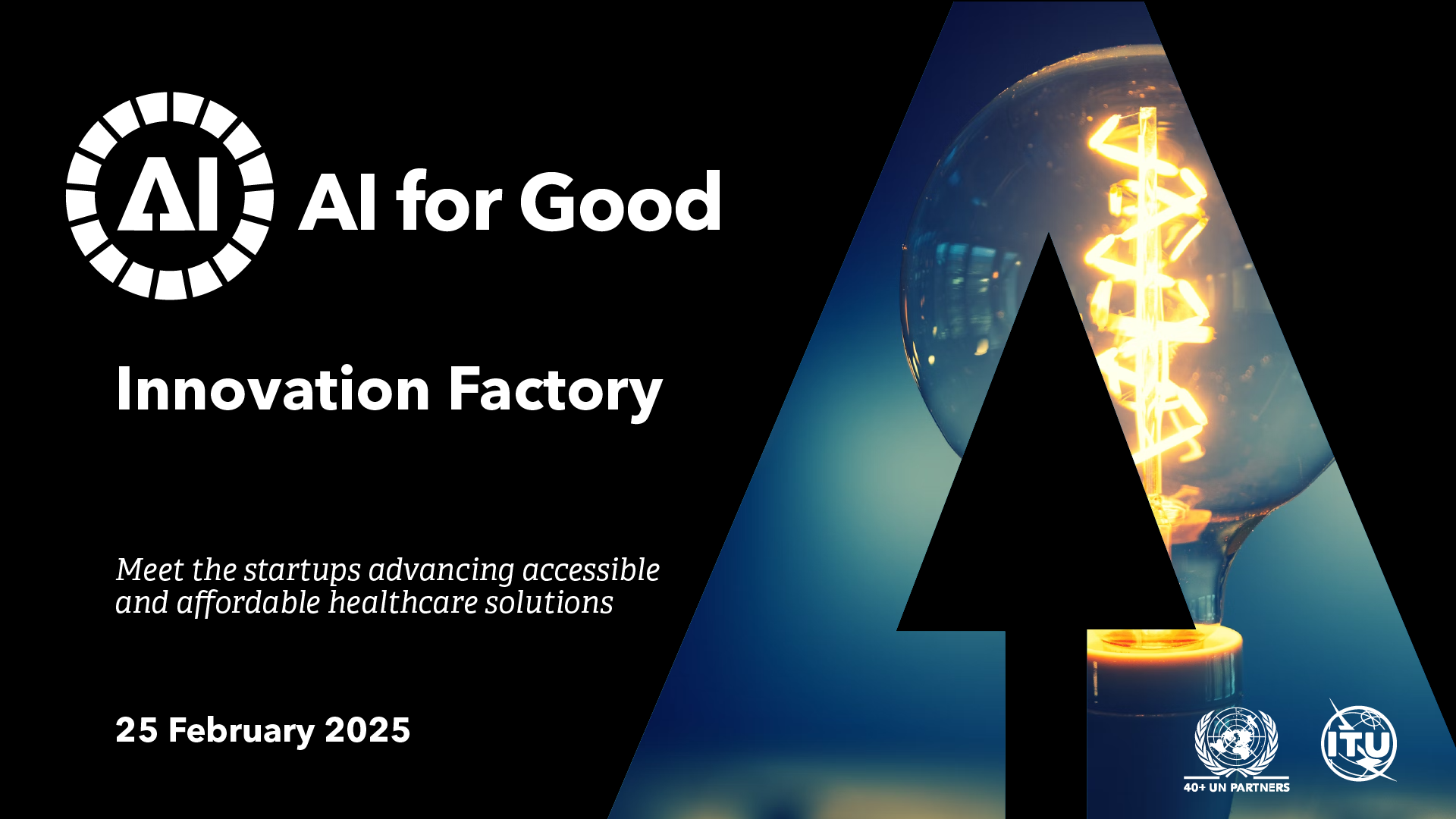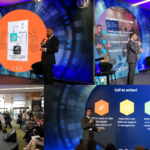One device will feature in the ‘tech for good’ projects of every humanitarian organization. The mobile phone – now in the hands of the vast majority of the world’s people – is fast becoming a powerful tool to source the data required to achieve population-scale improvements in quality of life.
The humble camera phone is now able to capture and transmit images and video of the quality necessary to guide medical interventions. AI’s value in analyzing this unstructured data contributes to the considerable optimism surrounding AI and healthcare at the AI for Good Global Summit.
Watch the highlights video from day 2 of the summit.
Healthcare and AI: ‘Natural companions’
“Health and AI are natural companions,” says Professor Marcel Salathe, Head of EPFL’s Digital Epidemiology Lab, one of the leads of the AI for Good breakthrough team focused on healthcare.
“The health sector, in many countries, is the largest economic sector or the fastest growing,” says Salathe. “Skin disease recognition – if it works accurately – can be deployed on 6 billion smartphones, we expect, by 2021. Talk about impact and scale.”
Edward Hsu, Senior Advisor at World Bank Group, agrees that healthcare looks to be the field where AI-powered data analytics will make the biggest near-term impact: “I think you look at the health field, and it’s rife with so much inefficiency right now in how we do things, and the potential for data to really revolutionize that I think is [considerable]”.
Advances in AI meet advances in other disciplines
“Science in general is bringing us no less than five major revolutions that are converging at the same time,” says Maurizio Vecchione, Executive Vice President of Global Good and Research at Intellectual Ventures. “Think of what’s happening in genomics, think of what’s happening in material sciences, think what’s happening in computing … working in an interdisciplinary way, you can actually create revolutions.”
RELATED: What’s next for ‘AI for Good’: 4 key transformations on the horizon
Less than 3 percent of global healthcare R&D is spent on diseases affecting 40 per cent of the global population – this lack of focus on the ‘base of the pyramid’ is about to change, says Vecchione.
“In areas like healthcare and global food security and tech development, we’re at the cusp of a series of revolutions which are going to use the base of the pyramid as the starting point.”
Intellectual Ventures is working with the Bill & Melinda Gates Foundation to ‘reverse engineer’ technologies towards development challenges. To Vecchione, devices operating in one setting in a highly industrialized economy can be transformed into devices able to address a different problem in a different setting.
Here Vechionne offers three compelling examples of how the phone camera, matched with AI-powered data analytics, is becoming a powerful tool for change.
1. ID for newborn children
“There are today almost 1.5 billion people not accessing the healthcare system because the healthcare system doesn’t know who they are,” says Vecchione. “If you don’t know who they are, you can’t follow them clinically.”
Biometric ID programs do not include newborn children, a shortcoming that Intellectual Ventures and the Bill & Melinda Gates Foundation are addressing in a national-scale pilot project in Bangladesh.
Machine learning – combined with phone camera imagery of a newborn’s hand and foot – is proving capable of identifying these children very precisely, leading to clinical algorithms able to follow them throughout the healthcare system.
2. Tackling pneumonia, the leading cause of death for children
“Ultrasound is becoming a camera phone component,” says Vecchione. “The world is proceeding in a multidisciplinary way.”
X-Rays are the dominant means of assessing the health of our lungs. But AI innovators are now finding that machine learning can see patterns in ultrasound imagery that most humans cannot.
RELATED: Using ‘reverse engineering’ to harness the power of AI for Good
Assessing 1.7 million cases in related clinical trials, machine learning algorithms showed ultrasound to be more sensitive than X-Rays to some of the details around lung health.
“We’re teaching the humans from the machine, teaching them new techniques,” says Vecchione. “Machine learning is not only allowing us to build clever devices but also allowing us to create new science around what are the indicators, the visual biomarkers that we need to use.”
3. Eradicating cervical cancer in developed and developing countries
“Cervical cancer will kill roughly 20 million women between now and the time when the disease could be eradicated,” says Vecchione.
A phone camera can now take a picture of a cervix and interpret that cervical data better than the best cytologists in the world – “AI can give you better predictive value through the simple use of low-tech technologies, and you can imagine this kind of analysis being done at home in the future,” says Vecchione.
“Cervical cancer is an example of where, within the next 10 to 15 years, not only do we save a significant percentage of the 20 million women, we may actually eradicate it as a disease.”

















